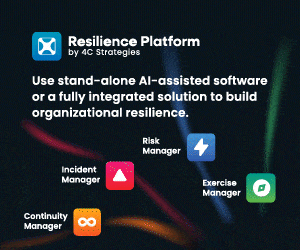Musings from Malaysia on Covid-19

Business Continuity in Times of COVID'– ‘As I See IT……….’
While the Movement Control Order (MCO) enforced by the Malaysian government impacted operation/production areas relating to machinery and equipment, it especially brought forth the importance of IT availability.
The effectiveness of IT infrastructure and facilities provided during MCO as initiatives such as Work From Home (WFH) and Split Teams to get around inaccessibility to workplace and reduced manpower, came to the fore. The modes of communication commonly used during this time period, such as Zoom, Teams and Skype came out on top as avenues for facilitating remote collaboration.
Companies’ existing Business Continuity Frameworks are also tested as a result of the pandemic in general and their Business Impact Assessments (BIA), Business Continuity Plans (BCP) and Business Continuity Management System (BCMS) Framework in particular.
IT
Some of the top IT concerns relate to applications and network availability. Due to the rapid deployment of the MCO, many would have been caught off-guard especially in ensuring work mobility like the provision of company laptops to staff for them to be able to continue working away from the office (Work From Home). It is also not enough to provide them with the hardware; network connectivity challenges mean that staff must be provided with cellular/internet data plans that satisfies the need for coverage, bandwidth and sufficient data, in addition to strengthening the security infrastructure and policies for off-premise (off-prem) work.
It is in these times that document accessibility would become less of a problem for those organisations whose IT arm had long embarked on secure cloud-based storage or VPN accessible on-prem storage.
Once hardware availability, document accessibility and network connectivity challenges have been addressed, organisations would have to contend with possible situations that the applications they use without much thought whilst working from office don’t stand up too well or even actually work when having to be accessed remotely. For example, secure printing applications that require special print software and/or hardware for the printing of receipts, certificates, etc. Some improvement ideas that were considered are tabled below:
| Concerns | Laptop availability | Network connectivity | Document accessibility | Application performance / functionality |
| Proposed actions |
Conduct census on the staff laptop needs to enable better future staff mobility Initiate study to determine the adequate requirements and specifications of laptops best suited for remote working Engage with IT department on the laptop and application updates, services and maintenance for remote working when and where necessary. |
Gather information to install suitable security software for assurance that network security is maintained when staff are working remotely Produce the necessary policies and procedures on the utilisation of company resources for personal use when working remotely Reimburse staff for the utilisation of personal internet/network access/utilities for company matters |
Promote use of online collaboration tools such as cloud storage and remote conferencing Produce the necessary policies and procedures for working remotely Install the necessary software for document/data security. As an alternative to the Cloud, VPN and similar technologies can be considered to safeguard on-prem based apps, tools and storage |
Study the ability of the companies’ IT applications ability to function remotely and enhance them where necessary Perform load testing to ensure infrequently-used remote-access infrastructure can withstand the stress of day-to-day enterprise-wide usage. |
With the proliferation of online collaboration tools, organisations must not forget to provide the necessary training for their staff to fully maximise their potentials. And the IT helpdesk themselves need to be trained and possibly augmented with resources, FAQs and How-To documentation to handle the increased support call volume.
Business Continuity Management
Improvement plans that would involve revisions to existing BIA, BCP and BCMS Framework ought to be looked at in order to address any current shortcomings that has been demonstrated by this pandemic.
BCPs should explicitly incorporate current practices arising from this Covid-19 pandemic namely the Work From Home and Split-Team techniques if they have not already done so. Even if some quarters argue that pandemics are covered under the identified risk events of workplace inaccessibility, unavailable manpower and disruption of supply chains, it is a good idea to insert a pandemic-specific section into the BCP. Emphasis should also be placed on leadership-succession to address situations where senior management may be incapacitated.
The pandemic has shown that better cooperation is needed between Business Continuity, IT, Health and Safety as well as Human Resources towards improving IT availability, business operational resilience, safety and personnel matters. In order to improve synergy of process, responsibility and information flow, regular discussions should be encouraged.
What has been YOUR experience these past months since the lockdown? Do share your thoughts, concerns and contribute ideas to these Malaysian musings on COVID-19.


